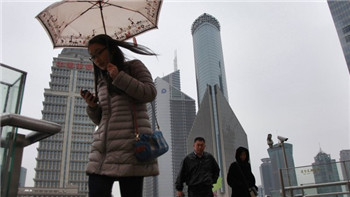
Another slowdown in food prices pulled Chinese inflation lower in October, according to the National Bureau of Statistics.
中国国家统计局数据显示,10月份,食品价格的再次放缓拉低了中国的通胀率。
China's consumer price inflation decelerated to just 1.3 per cent year-on-year last month, the slowest rate since May. On a month-to-month basis inflation fell by 0.3 per cent, the first negative reading since May.
10月份,中国居民消费价格总水平(CPI)同比涨幅降至1.3%,为今年5月以来的最低涨幅;环比下降0.3%,为今年5月以来的首次环比下降。
Economists had forecast a 1.5 per cent annual rate, after a 1.6 per cent reading in September. Beijing's inflation target is "around 3 per cent" this year.
9月份CPI录得1.6%的同比涨幅后,经济学家曾预测10月份的同比涨幅为1.5%。中国政府为今年全年设定的通胀目标为“3%左右”。
Low inflation reflects weakening demand and doesn't inspire confidence about the economic shift from manufacturing to consumption, yet at the same time it should allow Beijing to enact stimulus should it seek to support the economy further .
低通胀反映出需求趋弱,不利于人们增强对经济转型(从侧重制造业转向侧重消费)的信心,但另一方面,这种局面为中国政府实施刺激措施留出了空间——假如它希望为经济提供更大支持的话。
The main culprit for the deceleration was food, though food inflation is higher than the overall index. Food prices were up 1.9 per cent in October, down from 2.7 per cent in September and 3.7 per cent in August. Non-food inflation ticked down 0.9 per cent from 1.0 per cent.
CPI涨幅放缓主要是由食品价格导致的,尽管食品价格涨幅仍高于总体涨幅。10月份,食品价格同比上涨1.9%,低于9月份的2.7%和8月份的3.7%。非食品价格涨幅从1.0%降至0.9%。
"Wholesale food prices suggest that pork, vegetable and fruit price inflation all eased last month," said Capital Economics before the figures came out. "
“食品批发价格显示,上月,猪肉、蔬菜和水果的价格上涨都有所放缓,”凯投宏观(Capital Economics)在CPI数据公布前表示。
Meanwhile, producer prices were deflating at a rate of -5.9 per cent, a six-year low, for a third straight month.
另一方面,10月份工业生产者出厂价格(PPI)连续第3个月同比下降5.9%。
The PPI has been negative for 44 consecutive months, reflecting excess supply of housing materials and raw materials, and overcapacity in heavy industry.
PPI已连续下降44个月,反映出建房材料和原料的供应过剩,以及重工业的产能过剩。












